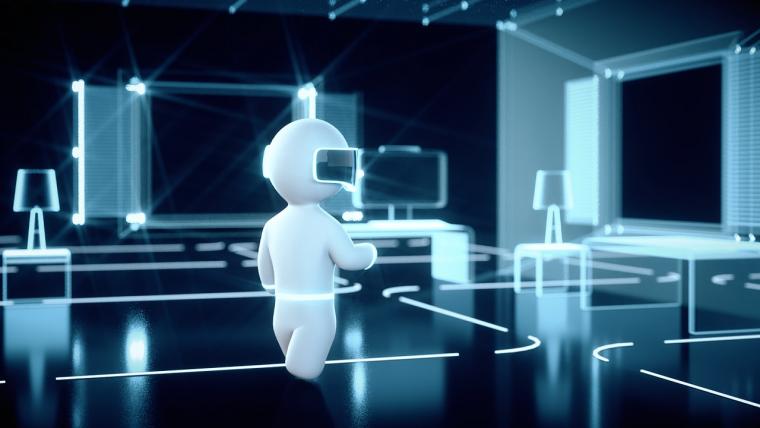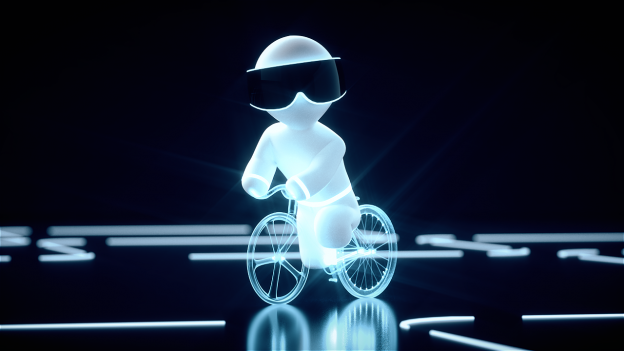Shaping Reality: the rise and rise of AR and VR technology

Real business benefits from virtual and augmenting technologies
Staying ahead of the competition means engaging with audiences on their terms, at their convenience, and reaching them in increasingly innovative and immersive ways. Virtual Reality (VR) and Augmented Reality (AR) have emerged as transformative technologies that hold immense potential to meet these aspirations across various sectors. Here, we delve into the positive impacts VR and AR can have on business, and highlight the wealth of opportunities they bring for growth and success.
Creating worlds that meet consumer demands
Across industries, VR and AR are reshaping the way employees are trained by creating realistic and immersive training simulations. Sectors such as healthcare, manufacturing, aviation, and the military are leveraging these technologies to train their personnel in safe and controlled environments. VR allows trainees to practice complex procedures and scenarios without real-world consequences, reducing costs and improving performance. AR, on the other hand, overlays information and instructions onto the trainee's field of view, enhancing situational awareness and providing real-time guidance. By adopting VR and AR for training purposes, businesses can streamline their onboarding programs, boost employee productivity, and minimise risks.
It would be impossible to write about VR and AR without mentioning the gaming industry. The technology offers a new level of immersion and interactivity for gamers, and has the potential to complete change the industry. VR headsets transport players into virtual worlds, providing an unparalleled sense of presence and realism, while AR overlays digital content onto the real world, creating interactive experiences that enable players to use real-world marker to achieve in-game goals. Whether it's collecting monsters, building palaces, or running from zombies, AR puts the user and their environment at the heart of the action. All of this results in increased user engagement and expanded market opportunities.
Beyond gaming, VR and AR are transforming the classroom, making learning more interactive, engaging, and effective. Through VR, students can travel back in time to explore historical sites and witness world-changing events, travel to outer space and walk on distant planets, and dive into the depths of the ocean to explore inaccessible shipwrecks and highly adapted organisms, all from the comfort of their classrooms. AR enables educators to overlay digital information onto real-world objects, making abstract concepts tangible to facilitate better understanding. These technologies provide immersive and hands-on experiences, catering to various learning styles and enhancing knowledge retention.
Once we graduate from the classroom and into the world of work, we find that almost all industries rely on marketing in some form. To succeed, businesses need to captivate their audience's attention and stand out from the crowd. VR and AR offer unique and immersive marketing experiences that leave a lasting impression on customers. Through VR, businesses can transport potential customers to virtual showrooms to interact with products, allow them to walk around virtual home extensions or outdoor buildings, and safely test drive new vehicles first-hand, all from the comfort of their homes. AR enables marketeers to overlay digital content onto real-world environments, creating interactive and personalised campaigns. These technologies engage consumers in a way traditional marketing methods could only dream of, driving brand awareness, increasing customer engagement, and ultimately boosting sales.
Working harmoniously with the marketing industry, the retail sector is shaping the future of shopping, with VR and AR playing vital roles in this transformation. VR allows customers to virtually try on clothes to see how they look or pair with existing outfits, test products, and visualise furnishings in their own homes, reducing the need for physical stores, and thereby increasing customer convenience. These technologies enhance the customer's shopping experience, increase product understanding, and facilitate purchasing decisions. By adopting VR and AR, businesses in the retail sector can expect to boost online sales, reduce return rates, and gain a competitive edge in the e-commerce landscape.
When it's time to take a break from work, VR and AR are revolutionising the tourism industry by offering virtual travel experiences and enhancing real-world exploration. VR enables would-be tourists to explore exotic destinations, historic landmarks, and cultural sites virtually, enticing them to plan future trips. AR enhances the physical travel experience by providing real-time information on locations and destinations, navigation assistance, and immersive storytelling. This expands the tourism market by offering accessible and engaging experiences to a global audience. By embracing VR and AR, the tourism sector can attract more visitors by giving them a tangible preview of what to expect on their trips, create memorable experiences, and differentiate themselves from competitors.
Whether it's through learning, working, or leisure, VR and AR are unlocking new frontiers and reshaping traditional models and approaches. With the help of these cutting-edge technologies, businesses can expect to see an increase customer engagement, improvements in training efficiency, greater success in marketing campaigns, and expanded market opportunities.
If you're interested in embracing the power of VR and AR for your business, talk to us today https://www.dotfive.co.uk/info/contact

Whether it's through learning, working, or leisure, VR and AR are unlocking new frontiers and reshaping traditional models.